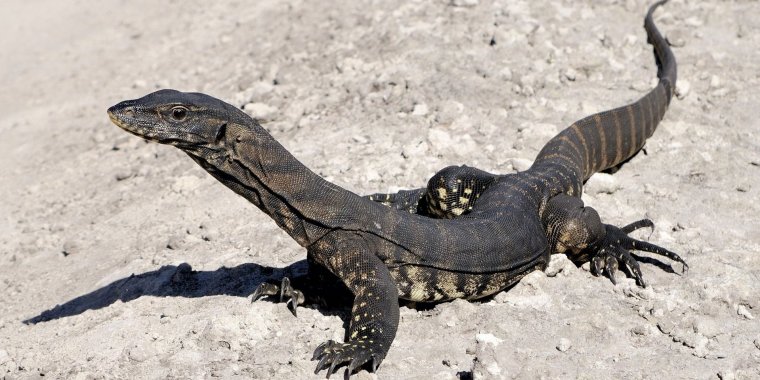| News / World News |
Australia’s giant lizards help save sheep from being eaten alive
A study led by the University of Cambridge has found that heath goannas - a species of giant, scavenging lizard - act as natural clean-up crews by clearing maggot-ridden animal carcasses from the landscape.

Australia’s giant lizards help save sheep from being eaten alive. Photo: Spikercs/Wikipedia
This reduces the emergence of blowflies, which attack sheep by laying eggs on their backsides that hatch into flesh-eating maggots. The disease, known as ‘fly strike’, costs the Australian sheep farming industry an estimated $280 million a year.
This study was carried out at 18 sites across the Marna Banggara Rewilding Project area on Australia’s southern Yorke Peninsula, where over 90% of the native mammals are now extinct.
The study found that heath goannas perform a superior blowfly control service to introduced European mammals, including red foxes and cats, which are displacing them.
The researchers say that boosting populations of native large reptiles like heath goannas is vital in restoring Australia’s ecosystem and the services it supports.
“We found that Australia’s native scavengers like heath goannas are much more effective in removing blowflies from the landscape than invasive scavengers like European foxes and cats,” said Tom Jameson, a PhD researcher in the University of Cambridge’s Department of Zoology and first author of the report.
High densities of blow flies put sheep at risk of ‘fly strike’, a disease where blowfly maggots burrow into the sheep’s flesh and start to eat it alive, causing painful wounds. This affects the market value of the sheep, as well as reducing breeding success and often resulting in death.
“Blowflies are a massive problem for the Australian sheep farming industry. They cause a horrible disease that is expensive for farmers to manage and a real animal welfare problem for sheep,” said Jameson.
The heath goanna is an endangered species of giant lizard native to the heathlands of southern Australia that can grow up to a metre and a half in length. It feeds on the dead carcasses of other animals, as well as catching live animals.
Reptiles like the heath goanna are the largest remaining native land scavengers in much of Australia today.
YOU MAY ALSO LIKE





